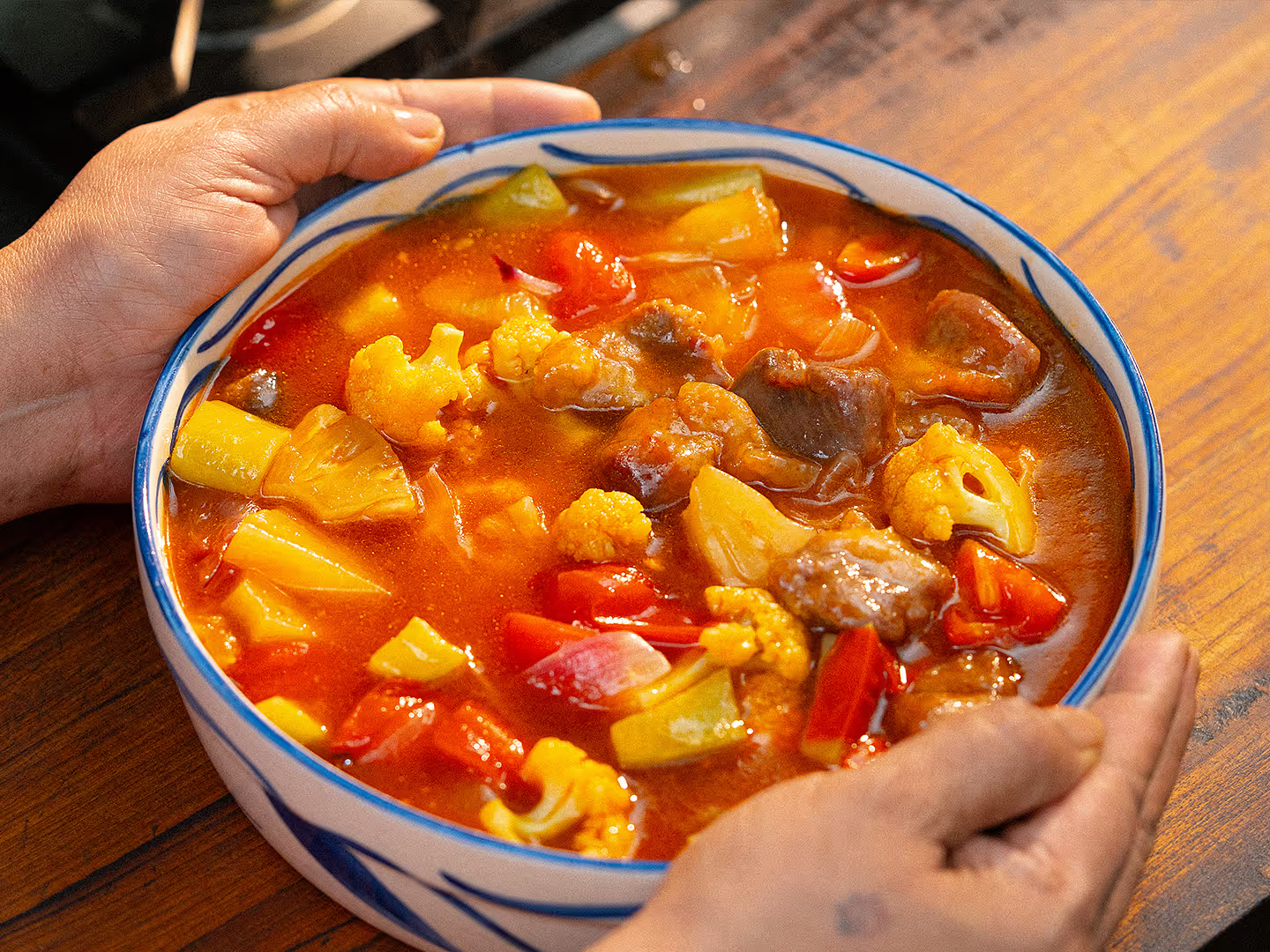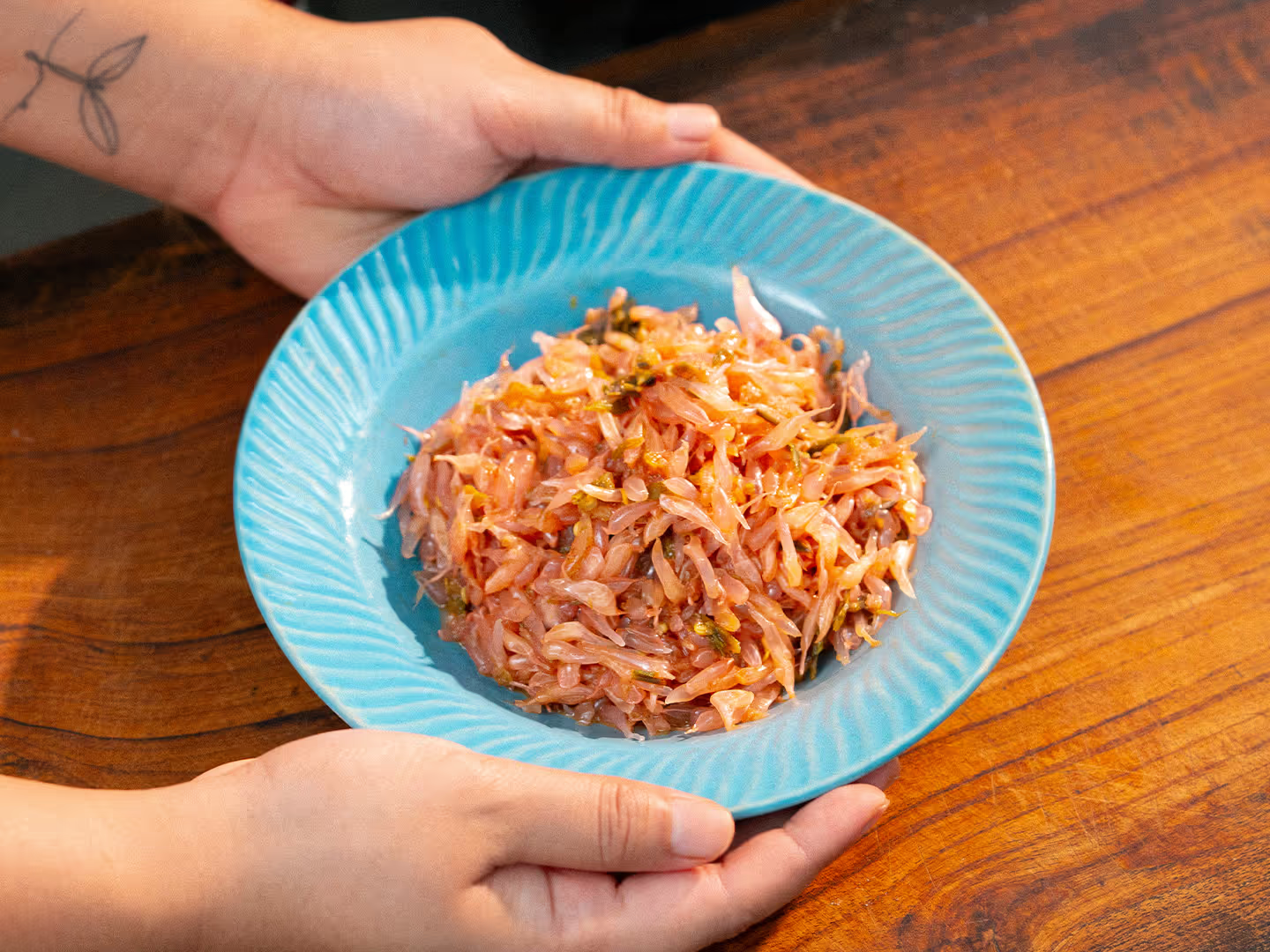Shukto
A wide array of mild, sometimes bitter, milky curries served for lunch to open up the palate for the oncoming spicier courses
- Cooking time1 hour
- Calories229kcal
The most popular kind of Bengali shukto is the mild, comforting stew packed with a variety of vegetables, most notably potatoes, sweet potatoes, bitter gourd (korola), green bananas (kachkola), raw papaya (pepe), brinjal, drumsticks (shojne), and flat beans (sheem). Even though this form of shukto has, in recent times, come to be associated with 'traditional' biyebaris and other feasts, and is also quite sought after at restaurants, this is only one of the many different kinds of shukto recipes that are part of the Bengali cuisine. As such, 'shukto' is not the name of a single dish, as is commonly believed, but an entire category of curries (like dalna or ghonto) in its own right. Lau'er shukto (made with bottle gourd), pepe'r shukto (green papaya), shosha'r shukto (cucumber), and dhula shaak'er shukto are some of the other kinds of shukto known today, albeit among few families. Within the structure of the Bengali meal, shukto is eaten right at the beginning, sometimes just after shaak (greens) and before dal (lentils). It is said to stimulate the appetite and prepare the palate for the oncoming spicier courses.
Frequently Asked Questions
Books in this recipe
Ingredients
- 160 g shojne data (drumsticks)
- 120 g mishti alu (sweet potato)
- 100 g sheem (flat beans)
- 100 g brinjal
- 50 g korola (bitter gourd)
- 100 g potato
- 150 g kachkola (unripe bananas)
- 150 g kacha pepe (unripe papaya)
- 10 pcs dal'er bori (sundried lentil dumplings)
- 600 g water
- 60 g vegetable oil
- 4 pcs bay leaves
- ½ tsp panch phoron
- 35 g ginger paste
- 25 g sorshe bata (fresh ground mustard paste)
- 15 g coconut (grated)
- 100 g milk
- ¼ tsp maida
- 20 g total salt
- 22 g sugar
- ½ tsp radhuni (finely ground)
- 10 g ghee
Method
- Cut potatoes and sweet potatoes length-wise, into 2-cm wide wedges. Cut kachkola, pepe and brinjal into 6-cm long, 3-cm wide pieces. Trim the ends of sheem, remove the fibrous strands, and halve them. Chop korola into 4-cm long slices. Strip off the the outer fibres of shojne data (drumstick), and divide them in 5-cm long sections.
- The vegetables will be prepped in two ways before we start cooking: (a) shojne data, pepe, sheem, sweet potato, and potato will need to be parboiled, and (b) brinjal, kachkola, and korola will need to be fried.
- So, put the first group of vegetables in a boiling pot with 5 g salt and 600 g water. Put the lid on and parboil on low heat for 15 minutes. Stir midway to steam evenly. When done, strain immediately to prevent the vegetables from cooking further. While straining, reserve the water for later use.
- Heat vegetable oil in a kadai. Fry daal'er bori until golden. Set aside. Similarly, fry korola, kachkola and brinjal one after the other, until each one is golden. Remove from the oil and set aside.
- Temper the oil with bay leaves and paanch phoron. Once aromatic, add ginger paste and fry it on low heat for a minute. Then add shorshe bata (mustard paste) and continue frying. If pan dries out, add a splash of water (you can use the water you reserved earlier while straining the vegetables). Stir well until oil separates.
- Add boiled potatoes, and cook on low heat for 3 minutes. Add the rest of the boiled vegetables, along with fried kachkola and the bori. Add 15 g salt and 22 g sugar. Mix everything well.
- Sprinkle grated coconut and give everything a gentle stir. Now, add the water reserved from the boiled vegetables. Add brinjal and korola. Mix gently so that the veggies don't break.
- Make a solution of milk and maida, and pour it into the pan. Allow everything to bubble on low heat until all the vegetables are fully cooked (around 3 to 5 minutes).
- To finish, crush radhuni to a powder using a mortar and pestle, and sprinkle it over the shukto. Finally, add ghee, cover the pan, and allow it to rest for a minute or so, before searving.






























.avif)
